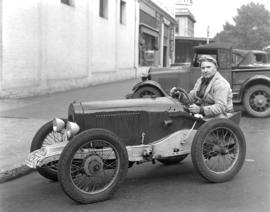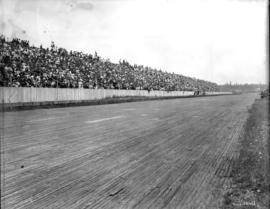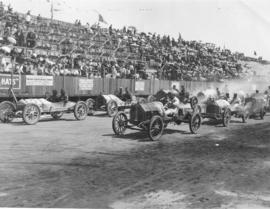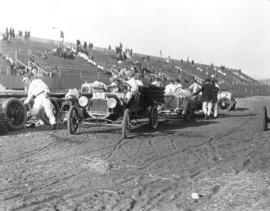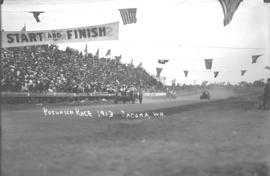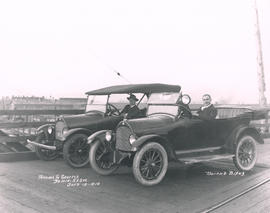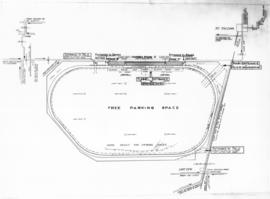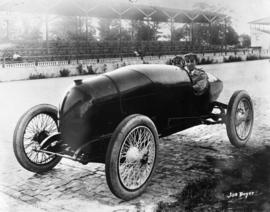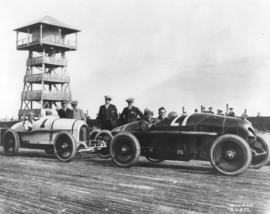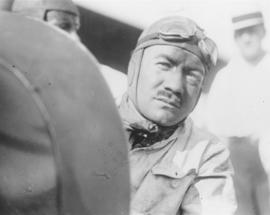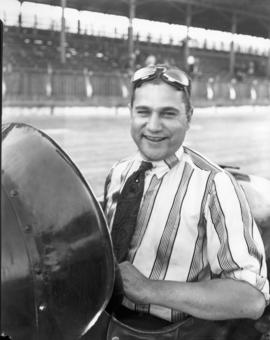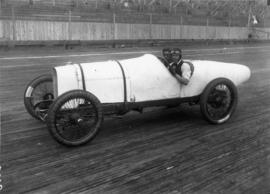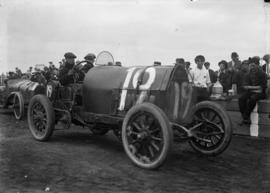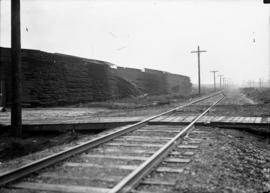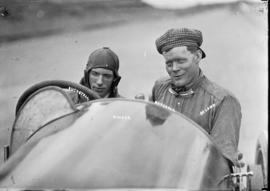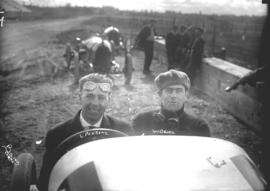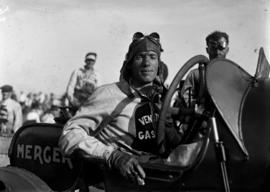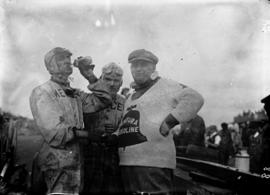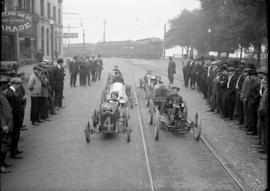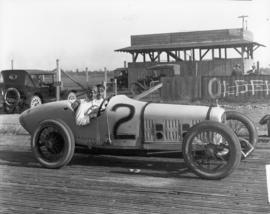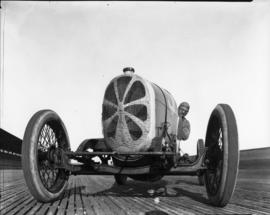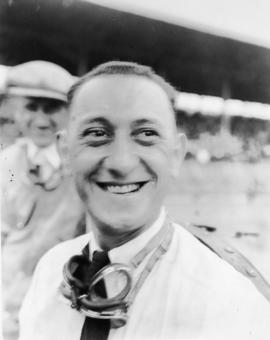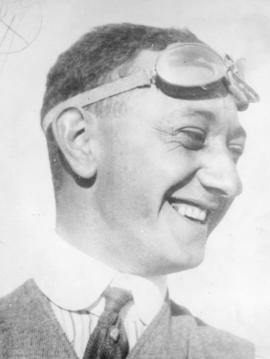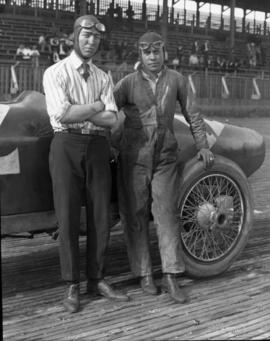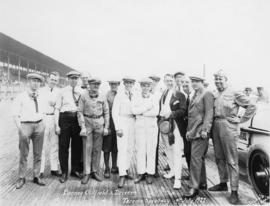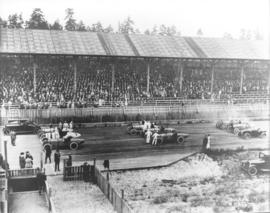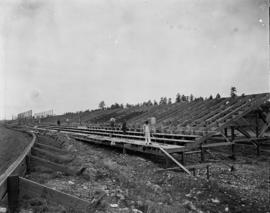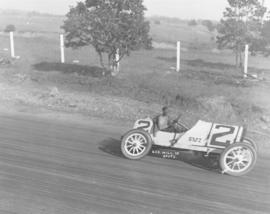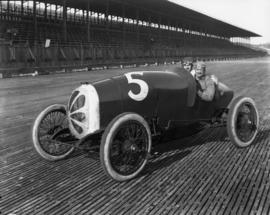On July 3, 1914, Jim Parsons and his mechanic W. Ogden won the Intercity 100 mile race at the Tacoma Speedway in their Frantz racer, repeating their victory of the previous year. The winning time was 1:21:29 with an average speed of 73.6 mph. The Intercity allowed only car entries from cities in Washington, Oregon, Idaho, Montana and British Columbia. Parsons was from Seattle. A total of 12 cars were entered in the race. Parsons won the race, but the most publicity went to 2nd place finisher S.F. Brock. On July 2nd, Brock and his mechanic N.E. "Nervy" Green ran down and killed spectator R.C. Pollock who was attempting to cross the track. The Wright race car flipped, injuring the pair, and severely damaging the car. The pair worked into the night getting the car back into racing condition and received a standing ovation when they finished second. In addition to picking up the InterCity honors, Jim Parsons may have also gotten a little something extra from the City of Tacoma: a possible speeding ticket. He was caught traveling 60 mph on South Tacoma Blvd. on Friday, June 26th. According to the June 27th News Tribune, the case was postponed in police court until Monday, June 29th, but no further information was provided. (T. Tribune 7/3/1914, pg.1; 7/2/14, pg. 1)
Tacoma Speedway (Lakewood); Racetracks--Lakewood--1910-1920; Automobile racing--Lakewood--1910-1920; Parsons, Jim; Ogden, W.; Automobile racing drivers;
